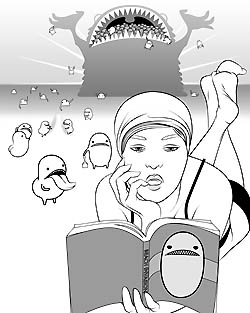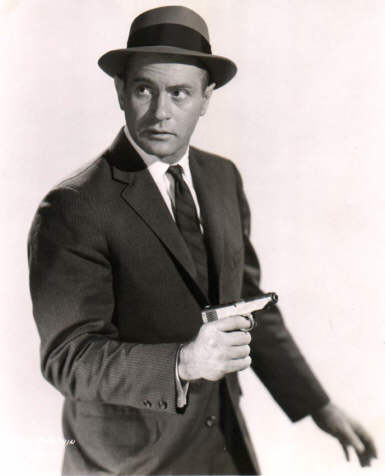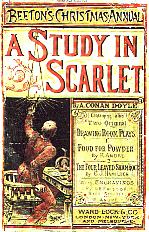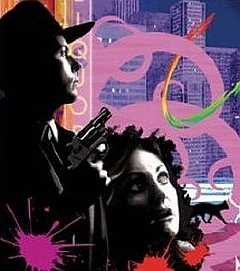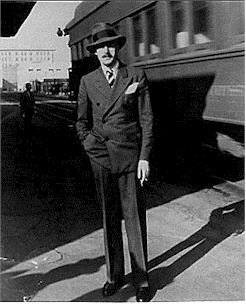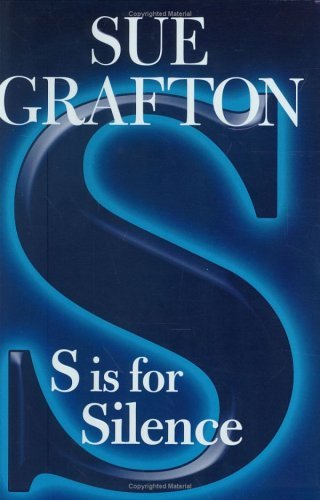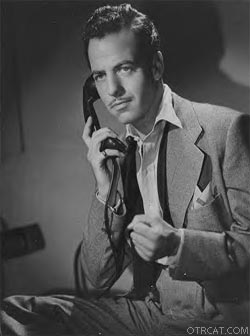|
Irvine Valley College: Online Literature Study of the School of Humanities and Languages Literature 110 - Popular Literature Spring 2013 - Ticket #62740 // Marjorie Coverley Luesebrink, MFA, Instructor
Unit 3: Detective on the Beat - The Big Sleep, Raymond Chandler
Chandler's Detective, Philip Marlowe In this unit, we will be reading Raymond Chandler's *The Big Sleep.* You are free to get any of the movie titles that have been made from Chandler's books - they are a lot of fun and fairly true to the original plots! Be sure to look at the Patterns of the Structure and the Value system that Chandler establishes (tongue-in-cheek!). Whereas the Horror Genre can tell stories that truly terrify us, the subcategory of the Crime Genre known as Detective Fiction is usually not very scary and instead is a lot of fun. Primarily, the Detective Novel centers around the solving of a murder of some kind, and the key elements are "delivered" to the reader in a way that makes the story a guessing game. Readers love to scout through the details and plot devices to see if they can guess the real criminal ahead of the Detective :-)) As I mentioned in the Introductory Lecture, each of our large categories has several sub-categories that define certain specific elements in the category and are often used extensively by book-industry businesses - especially publishers. Detective Fiction is a sub-category of Crime Fiction - and within this sub-category are yet further sub-divisions. [ from the Intro Lecture -British novels, for instance, in which we never see the murder or the victim are called "Tea Cozy Crime Novels" (:-))] The most traditional kind of "Detective" is modeled on the British Sherlock Holmes [this site has an excellent collection of Doyle's stories].
While it's always risky to overgeneralize, the Sherlock Holmes type of detective solves the mystery by knowing some esoteric information that nobody else would have known or thought of. Like other detectives, of course, he uses native intelligence, deductive reasoning, and close observation - but the critical piece of information is often some unusual and little-known fact. I am guessing that this kind of solution was always very popular with the Brits, and continues to be popular across the globe.
As an example of Holmes' ability to know esoteric novel, we can look at the study - a perfect example of the compleat scholar-detective [from STRANGE MAPS - [caveat: this is Russell Stutler's work - he is an American artist living in Tokyo; his website showcases, among other examples of his graphic art, this ink and pen floorplan of 221B Baker Street in London, one of the best-known fictional addresses of all time – as it is the residence of literature’s most famous detective, Sherlock Holmes. The floorplan was “drawn from notes taken while reading all 60 Sherlock Holmes stories twice in a row. If it appears in the books, it appears in this drawing,” says Mr Stutler. However, the Strange Maps site doesn't seem to come up any more - and the pages I could get to have not been accessed for over fur years! Ah, the Web!] Another kind of detective that essentially arose in British detective fiction is the "Scotland Yard" expert. P.D. James' detective, Inspector Adam Dalgliesh is the perfect example of what has come to be called the "Police Procedural." In this sub-category, the detective knows the ins and outs of the police work and the players at the police station. "Police Procedurals" are very important in the United States, today; they tend to take place in urban areas like New York City and Chicago.
The Gumshoe Detective Our Raymond Chandler, though, writes what are considered to be "Gumshoe" Detective Stores. The origin of the word "gumshoe" is from the early 20th Century, when police detectives and private detectives wore soft, rubber-soled shoes to sneak around town and catch criminals. Note here: Holmes does most of his work in his study - whereas, Philip Marlowe's office is not much more than a desk and a file cabinet. Marlowe does most of his "work" in the neighborhood (that is, Los Angeles streets and establishments). Together with his California counterpart, Dashiell Hammett, Chandler was one of the most important influences on Gumshoe fiction.
Dashiell Hammet One of the reasons that Chandler and Hammett were so critical to Gumshoe fiction is that they were writing from California. A half-century ago, the majority of readers and book buyers lived on the East Coast. They didn't know the streets and byways of L.A. or San Francisco at all - and so the fact that Chandler and Hammett tended to haunt the streets of these exotic cities made their fiction compelling.
Bookcover for The Maltese Falcon by Dashiell Hammett
Now, the Gumshoe Detective does not solve his/her crimes because he has special knowledge from books, nor does he/she succeed because of inside police department information - these detectives succeed because they know the territory and the people - they are locals in the largest sense! [Kinsey Millhouse, created by Sue Grafton, is another such Gumshoe Detective.]
Bookcover for Sue Grafton's "S is for Silence" So, let's take a closer look at Raymond Chandler, his works, and *The Big Sleep* Raymond Chandler was born in 1888 and died in 1959. He was born in Chicago, raised for a time in England, and came to Los Angeles in 1932 after losing his job in the Great Depression, and published his first crime story about LA in 1933. Here is a good Biographical Sketch. [a good idea to read this carefully, it tells us a lot about his attitudes and experience!] *The Big Sleep* - first published in 1939 - introduced Chandler's soon-to-be-famous detective, Philip Marlowe (see where this name comes from in the bio). Chandler went on to write many books - some made into movies that you can rent if you like! (I recommend doing this.) Any analysis of Chandler's work must first acknowledge that Chandler always tried to push the envelope of the detective mystery. Even though he studied and purposely copied the pulp genre stories of his day, he always introduces subtle innovations that tell us about human nature and his own views of Los Angeles and its culture.
Humphrey Bogart and Lauren Bacall as Marlowe and Vivian Sternwood in *The Big Sleep* "Readable" Characters As we would expect in a genre writer who (unlike Mary Shelley, a first) comes into a genre like Crime Fiction with a wide set of forerunners, Raymond Chandler's characters are "self-consciously" produced. He has models - and he either chooses to adopt characteristics of his models, or he can choose, with equal impact, to alter the models or break the mold. Three characters from *The Big Sleep* are important to look at in this light. The first "character" of importance is Marlowe, himself. When we think about Chandler's biography - his life in Chicago, London, and San Francisco - we might remember that in the olden days, Los Angeles was considered a barbarian place, full of folks who had more money than taste and a decidedly pliable moral fiber!
Gerald Mohr as Philip Marlowe Chandler has created Marlowe as a person who is not only at home in this barbaric LA, but also has just the touch that lets him befriend almost anyone; Chandler wants us to see that he fits in. On the first page, Marlowe tells us: "I was wearing my powder blue suit, with dark blue shirt, tie and display handkerchief, black brogues, black wool socks with dark blue clocks on them." In almost every book, Marlowe tells us what he is wearing, and in most cases, if we think about it, he is dressed in a manner that most civilized people in those days would have considered "dandy-ish." In one book he wears a pin-striped, seersucker suit and peacock-blue socks - and so on. The fact that Chandler was so careful to signal us about Marlowe does not impact the movie makers - they immediately dressed Marlowe in unlikely (for California) trench coats and formal dark suits with formal ties - and not visible patterned socks. [The photo above is one of the most "casual" recreations of Marlowe.) In any case - we do want to note that Chandler must have outfitted Marlowe on purpose in clothes that no one would wear unless they were in flashy Southern Cal. And that is important - because it indicates that he is a native, that his character and mode of operation will be LA style and not like Chicago or London, etc. And Marlowe is different. He is different because, unlike most of the detectives both before and after his time, he is amazingly tolerant and forgiving (of character, not style). If he thinks that a person is essentially straight and honest, he will give them the benefit of the doubt. [many detectives are up-in-arms against anyone they think isn't respectable. Marlowe just doesn't like bad taste :-))] Another character to take a look at is Carmen Sternwood. For the time that this novel was written, she surely is one of the most daring women we might see in detective fiction. She's doing Porn, for goodness sake! And she is drugged, as well. I can't go on, but you get the point! She breaks the mold up to that point, for sure! Finally, be sure to notice Linda Loring, the actress in the story. She is not your typical blonde bimbo - rather she is greacious, controlled, and very brave. Chandler brought her back in his last, finished work, Playback in 1958. continue on to Intimacy of Style and Tone
Intimacy of Style and Tone Patterned Structure Reassuring Plot Clear-cut Value System Mythological and Folk Referents
Detective Fiction (one subcategory of Crime Fiction): The detective genre continues to be very popular all over reading-land - and fans seem to be particularly widely read in the field! Some good historical/traditional authors include: Arthur Conan Doyle: http://www.sherlockholmesonline.org/ - Sherlock Holmes is the epitome of the classic detective. Even if you have not read Doyle's books, you probably know a lot about Sherlock! P.D. James: A woman writer, with an amazing knowledge of police procedure, is a perennial favorite. Agatha Christie: A taste for Agatha can be satisfied almost any time - she has written a LOT of books! Raymond Chandler: Raymond Chandler - an author we will be reading, was one of the first "gumshoe" detective genre writers. His books recall a classic period of Los Angeles history. Dashiell Hammett: Another popular traditional California author - his fiction is both "hard-boiled" and "gumshoe."
Marjorie Coverley Luesebrink: write to me with questions!
Marjorie Coverley Luesebrink, MFA, your Instructor, is a Professor of English in the School of Humanities and Languages, Irvine Valley College, Irvine, California. See Online writing at Home Page. |
| MENUBAR: About Your Class // Class Syllabus // Lecture Notes // Reading List // Recommended Reading // Assignments // Grading Policies // Contact Your Instructor // Announcements // Discussion |
